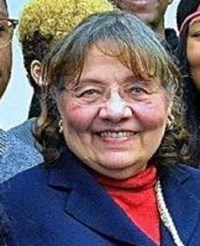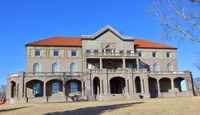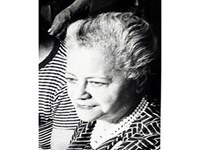- Belmont-Paul Women's Equality National Monument (110)
- Women's Rights National Historical Park (95)
- Boston National Historical Park (94)
- National Mall and Memorial Parks (80)
- Boston African American National Historic Site (61)
- Golden Gate National Recreation Area (54)
- The White House and President's Park (32)
- Grand Canyon National Park (31)
- Pennsylvania Avenue (30)
- Show More ...
- Harpers Ferry Center (39)
- National Register of Historic Places Program (27)
- National Historic Landmarks Program (13)
- Archeology Program (12)
- National Heritage Areas Program (11)
- Park History Program (11)
- National Center for Preservation Technology and Training (10)
- Wildland Fire Program (10)
- Network to Freedom (8)
- Show More ...
Showing 1,696 results for Women's Rights ...
Old Barn
Jenny Lake Climbing Exhibit
Imprisonment and Reconciliation: nimíipuu at Vancouver Barracks
- Type: Place

Greenwich Village Historic District’s reputation for dynamism can be attributed to its history of emerging artists and writers as well as the political unrest and activism of its inhabitants. With the rise of the counterculture movement during the 1960s, Greenwich Village’s Washington Square Park became a hub for writers and musicians. In 1969, LGB residents of Greenwich Village pushed back against police harassment at the Stonewall Inn.
Unita Zelma Blackwell (1933-2019)
- Type: Person

Born to sharecroppers in the Mississippi Delta, Blackwell rose from humble beginnings to become one of many unsung Black female heroines of the modern Civil Rights Movement. Blackwell was an outspoken critic of racial and economic inequality and the first Black female mayor elected in the state of Mississippi. We honor her as an ancestor for reminding us of the power to change the circumstances we were born into.
- Type: Person

Mrs. Recy Taylor was just 24 years old when she was brutally raped by six white men in Alabama. Upholding the Black woman's tradition of testimony and protest, Taylor actively participated in the pursuit to bring her attackers to justice. Though the men were acquitted in two separate trials, Taylor's courage speaks to the resolve of Black women to channel their pain and anger into political anger. We honor Taylor as an ancestor for teaching us a lesson on courage.
Anna Arnold Hedgeman (1899-1990)
- Type: Person

Before Shirley Graham married W.E.B. Du Bois in 1951, she had earned a national reputation as a playwright, composer, conductor, director, and author. Born to a A.M.E. minister and a European mother, Graham was raised to appreciate Black culture and music. From a young age, her parents instilled in her the importance of social justice and the uplift of the Black Community. For her lifelong dedication, we honor her as an ancestor.
- Type: Person

There are people who give great speeches, and they there are those who perform them. Hallie Quinn Brown was one of the few who perform speeches. In her era, she was recognized as one of the greatest elocutionists across two continents, Europe and America. Though she rarely appears in history books, Brown’s legacy can be found in today’s speech-language pathologists and spoken word artists. She lectured widely on the cause of temperance, women’s suffrage, and civil rights. We
- Type: Person

Using the Greek word agape, meaning brotherly love, Nash coined the term agapic energy describe this comprehensive phenomenon. This unconditional love for humanity was the driving force behind the movement in the 1960s and can be a driving force among today’s movements, according to Nash. We honor Diane Judith Nash for reminding us of the power of love.
- Type: Article

Fort Des Moines is a military installation in Des Moines, Iowa. During World War I, the fort served as the first and only training site for African American officers. During World War II, Fort Des Moines was the first training site for the Women’s Army Auxiliary Corps (WAAC) and the Women’s Army Corps (WAC), and the only training site for WAC and WAAC officers.
Military Service and the Port Royal Experiment
Mead Museum
- Type: Place

The Mead Cultural Education Center, located in Yankton, South Dakota, was constructed in 1909 by Dr. Leonard C. Mead. Originally serving as part of the women’s ward for the Dakota Hospital for the Insane, the building was in use until the 1980s. Today, however, it houses the Dakota Territorial Museum and is upkept by the Yankton County Historical Society.
Yavapai Geology Museum
- Type: Place

Open daily: 8 am - 7 pm. Yavapai Geology Museum offers one of the best vantage points for an overview of Grand Canyon geology. The building is right on the very edge of the canyon rim at Yavapai Point, The Museum Features: a bookstore and museum shop, large picture windows for viewing the canyon, and a variety of exhibits about the geology of Grand Canyon. Restrooms are in a separate building adjacent to the parking lot. The shuttle bus stop is also on the parking lot.
Nettie Craig Asberry
- Type: Person

Nettie Craig Asberry is considered the first Black woman to earn a doctorate degree. Her family settled in Nicodemus in 1879, and she taught in town from 1886-1889, teaching both at the District No. 1 School and offering private music lessons. Asberry spent most of her life in Tacoma, Washington where she continued to teach music and advocated for the equal rights of all.










